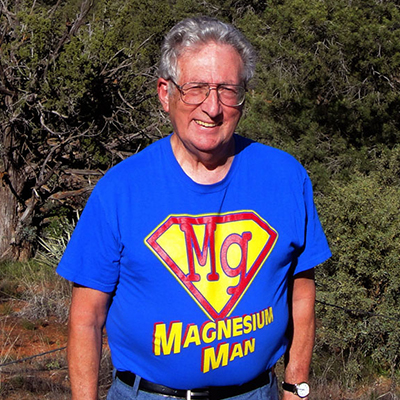Psychological Factors and Hair Tissue Mineral Analysis (HTMA): The Psychological Judge (Inner Tyrant)

This article is written/contributed by Dr. Rick Malter
Visit his website at The Malter Institute
There are two major ways in which the psychological Judge comes into play with HTMA mineral reports.
One way has to do with the reciprocal relationship between the Judge and stress. On a HTMA, a person’s stress status is reflected in the magnitude of the sodium (Na)/ potassium (K) stress ratio. The more that the Na/K ratio rises above the ideal Na/K ratio of 2.4/1, the more intense a person’s stress response becomes. Not only are there physiological aspects of stress, but the psychological aspect is also very important, especially when the Judge inflates and takes over a person psychologically – behaviorally and emotionally.
The other major way in which the Judge comes into play with HTMA mineral reports is in the practitioner who is analyzing and interpreting the test results and making supplement recommendations. If the practitioner is trying to arrive at a perfect interpretation of the HTMA results, the Judge may become activated and demand perfection in the practitioner’s HTMA work even though there is inherently some degree of error in any test. That’s what is technically called the standard error of measurement.
Also, it is important to remember that there are several different factors that can impact the results of a HTMA – supplements taken before the hair sample was cut, drugs and medications, hormones, diet, toxic metals, stress and psychological influences. This is why it is important to carefully interview the person whose HTMA is being reviewed in order to validate the test results as much as possible.
When it comes to making supplement recommendations, the Judge can also become activated by increasing the practitioner’s concern that he/she may damage or hurt the patient/client. However, if the practitioner is well trained and understands the essential meaning of the HTMA test results, then it is highly likely that sound supplement recommendations will be made with a bare minimum of risk of harm.
Still another way that the Judge comes into play psychologically with HTMA work has to do with the balanced oxidizer mineral pattern and mineral re-balancing based on a person’s HTMA. This is what a balanced oxidizer mineral pattern looks like using the TEI lab’s original ideal mineral levels as shown on page 12 of Dr. David Watts’ book on HTMA. My Excel worksheet converts all of these original ideal lab numbers to a scale with “1” as the ideal level for all minerals shown. These ideal mineral levels were very good approximations based on HTMAs of very healthy athletes around 1980. These ideal mineral levels provide the basis for comparing a person’s HTMA results with these ideal mineral levels. These ideal mineral levels also were used to generate ideal mineral ratios to further aid in interpreting HTMA results.
Since HTMA research and clinical applications show us that the mineral system is dynamic with complex intricate relationships, the closer one comes to this ideal mineral pattern, usually the more energetic and healthy the person is. Realistically, though, it is virtually impossible to achieve an ideal perfectly balanced mineral pattern and maintain it over time. However, the closer a person’s HTMA mineral pattern comes to this ideal mineral pattern, the more likely the person’s neuro-endocrine system is better able to optimally self-regulate, maintaining very good mineral levels and ratios.
It is important to keep in mind that the mineral system is constantly fluctuating and changing. Therefore, it is not realistic to expect that a “mineral re-balancing” supplement protocol will steadily bring a person into an ideal perfectly balanced HTMA mineral pattern.
Psychologically, the Judge in the HTMA practitioner and/or client/patient may become activated when a HTMA re-test is done. The HTMA re-test may not show a simple linear re-balancing of the mineral pattern with the expectation that it will move into a perfect re-balancing of all the essential minerals. The dynamics of the HTMA mineral system are fundamentally non-linear. These dynamics fit better with Chaos theory and a non-linear model.
When a person’s HTMA does not show movement towards a perfect ideal balanced mineral pattern, the HTMA practitioner and/or patient/client may start to lose confidence in HTMA theory and applications including supplement protocols designed to re-balance the mineral system. The psychological Judge likes to sow seeds of doubt when outcomes are not totally as expected in regard to a perfectly balanced mineral pattern and the concept of mineral re-balancing based on HTMAs.



